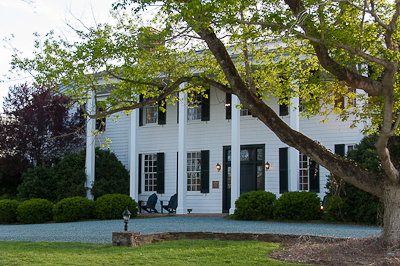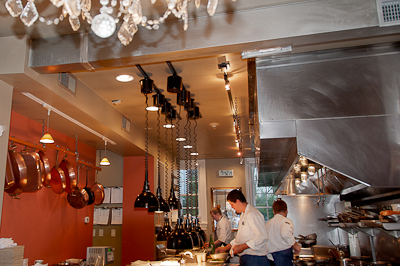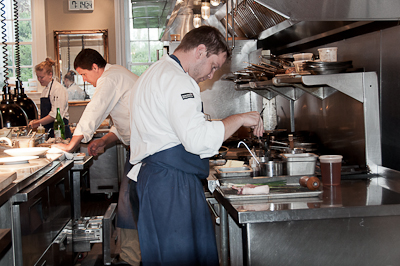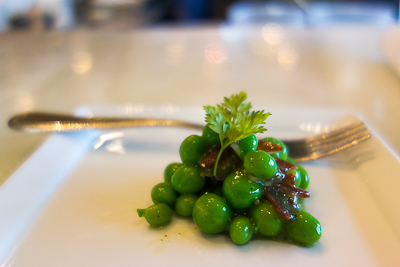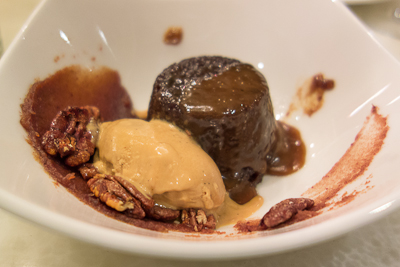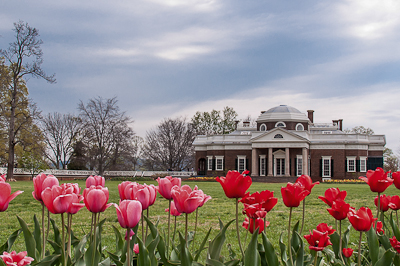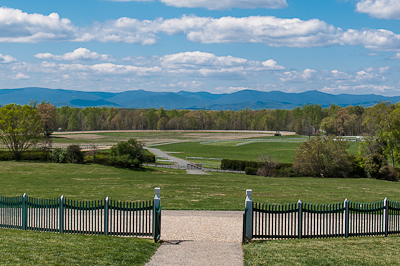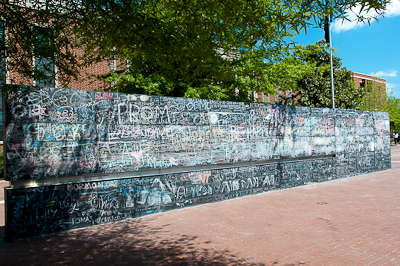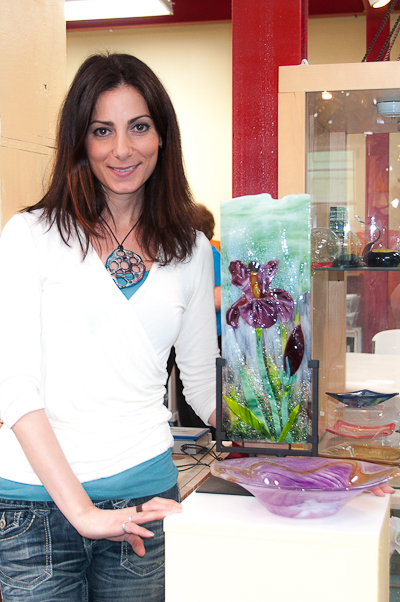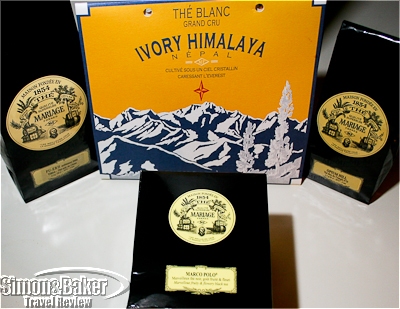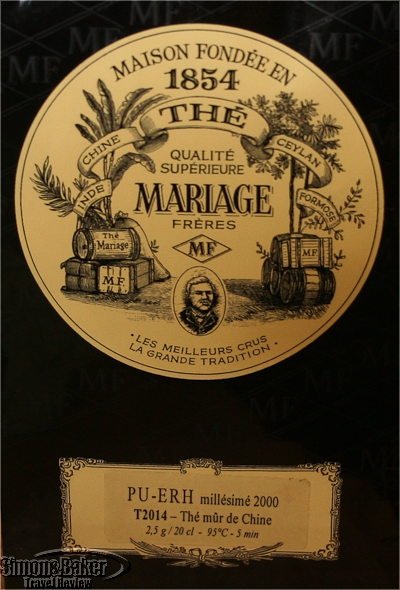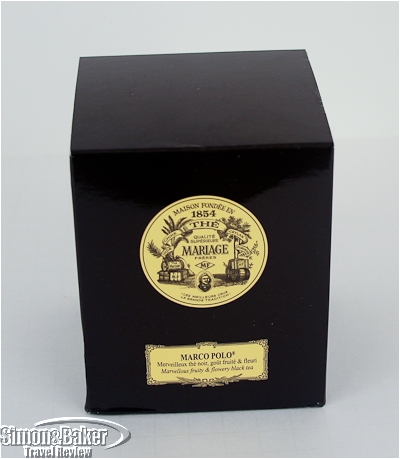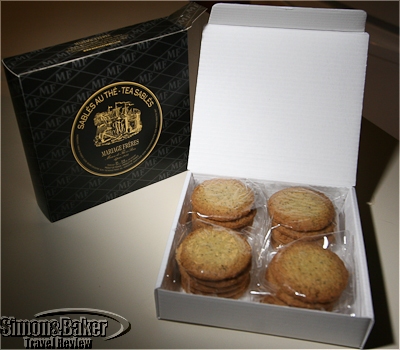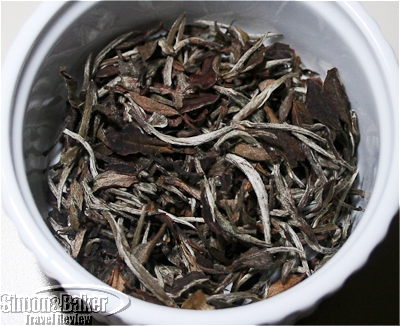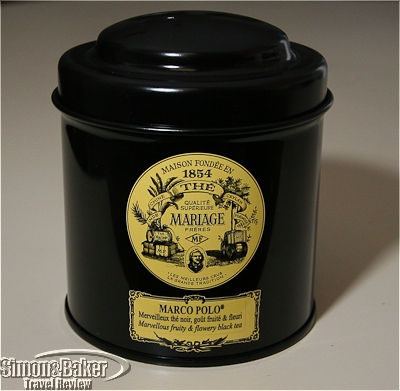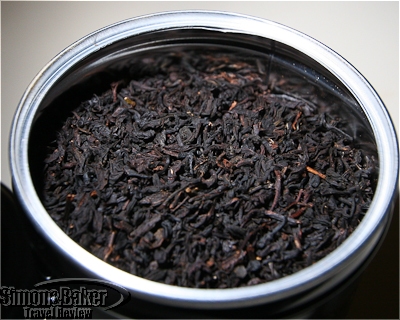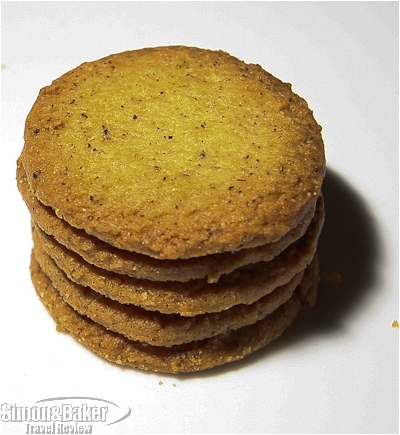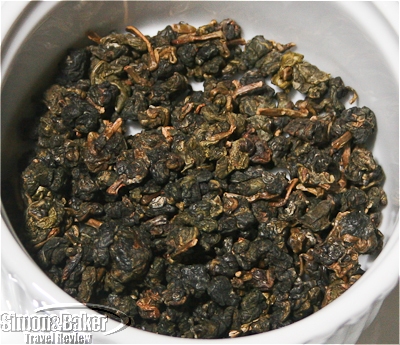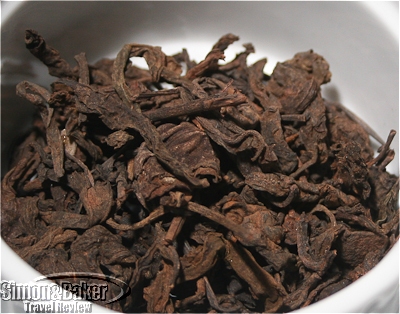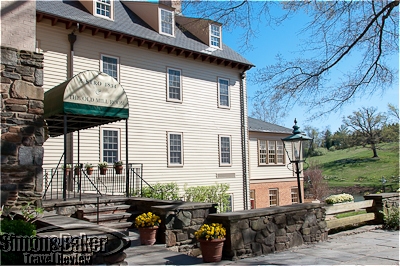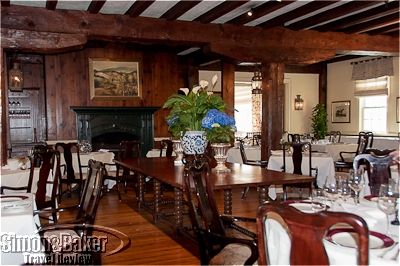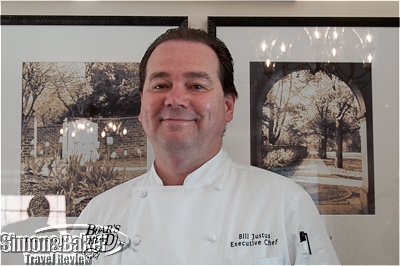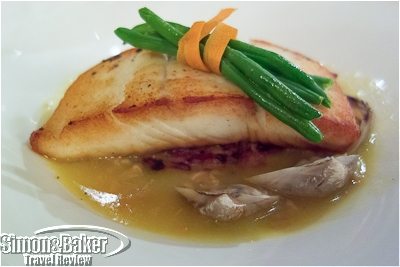Luxury Travel Review

Peak Design straps made it easy to carry cameras outdoors
Article and photos by Gary Cox
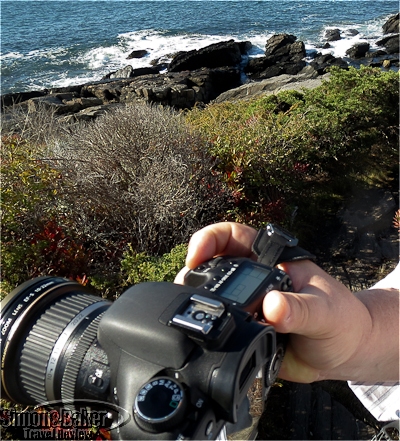
Using the Clutch I held the camera in position, ready to shoot during a cliff side hike
I had a chance recently to field test the Slide and Clutch camera straps from Peak Design. Prior to using the new straps, the Canon EOS-7D SLR I use when traveling sported the manufacturer supplied neck strap and I rarely gave it a second thought. It was a bit annoying when using the tripod to have the strap hanging off the camera, but it was too much trouble to remove or even adjust the old fashioned length clips, except in extreme circumstances.
When walking around to photograph a property or a destination, the strap provided a measure of safety to avoid dropping the camera, but I had to be alert and hold the camera in my hands to prevent the lens or body from smacking against something and being damaged. When hiking, I usually place the camera into a padded pack or case. With the camera securely packed away, I noticed a tendency to only pull it out and use it at particularly special spots, sometimes passing up shots that I would regret later. Holding the camera with the Clutch make it more likely for me to take those spontaneous photos, and for that I was glad.

The Slide shifted the weight of the camera away from my hand during long walks
The Peak Design straps offered some noteworthy innovations that made it easier to carry the camera securely and be ready to take a shot at anytime. The Clutch was a surprising pleasure to use. It allowed me to hold the body securely with my hand positioned to shoot. I adjusted my grip using its small strap to fit my hand snugly in place. Adding the Slide strap made it easy to carry the camera along on a hike, ready to shoot at all times, while shifting the weight to my neck. The Slide strap was sturdy, made from the same material as vehicle seat belts, and reinforced with padding in the center. It was simple to adjust the length of the Slide by opening the clips, moving the strap through them and locking it securely.

The quick release clips made length adjustments easy
The Anchor Link quick-connectors attached the Slide to the camera body and the bottom of the Clutch. The top of the Clutch attached directly to the camera, with a quick release spring to prevent accidental release. A plate provided with each strap could be mounted onto the bottom of the camera body using a standard screw. Multiple quick-connectors could then be attached to the plate. I prefer to use my custom fit plate from Kirk Photo on the camera body because it allows me to turn the camera sideways on the tripod and provides a stable surface to set the camera onto (provided the attached lens is not too heavy). Fortunately, my Kirk Photo plate includes a nice little slot to mount the quick-connectors. Aesthetically speaking, I prefer the sleek lines of my single plate which is custom shaped to the Canon body and will not twist or turn when I adjust the camera on the ball head.

The plate supplied with the straps provided four mount points

My Kirk Photo custom plate also provided a useful mounting point
The quick-connectors allowed rapid attachment and removal of the straps, perhaps my favorite feature. They gave the set-up solid feedback, and could support 150 pounds each, according to the manufacturer. The interlocking of the lozenge shaped anchor into the clip provided easy visual confirmation that the strap was secure. With a few extra Anchor Link quick-connectors on hand, my spare camera body can be ready for action quickly. All it requires is that I move the straps. I liked being able to remove the strap when placing the camera onto the tripod, eliminating one potential tipping hazard. I never found it necessary to detach the Clutch, other than when I was playing with different configurations of the Sling, a few of which used the top attachment point on the camera body.

The Anchor Link quick-connectors attached the straps to the camera securely

It was a matter of moments to set up the Clutch attachment to the camera
Peak Design took the mundane camera strap and updated every aspect of it. They improved the method of attachment, how it is adjusted, the options for carrying the camera and enhanced my overall experience as a photographer. I plan to continue to use those straps as part of my ongoing equipment configuration. The Peak Design mission of enabling “photographers, adventurers and outdoors enthusiasts to better capture the beautiful world around them” appealed to me. I was pleased to discover the products fulfilled this mission for my purposes. Peak Design, 2325 3rd Street Suite 410, San Francisco, California 94107, http://peakdesignltd.com
+1 312.203.8427, info@peakdesign.com.
Inspired Charlottesville chef reinvents classic cuisine for twenty first century
Article and photos by Josette King
The restaurant was located on the first floor of the Clifton Inn
During my recent visit to Charlottesville, Virginia I had the pleasure to dine at the Clifton Inn Restaurant. My reservation, made ahead by a local friend, indicated that it was for the Chef’s Counter. I didn’t realize the extent of my good fortune until I was escorted through the dining room, straight to the kitchen. As the daughter of a French chef, I have appreciated since childhood that it is a singular privilege to be invited into the inner sanctum. And that night, I was the chosen one.
I was momentarily perplexed by the long row of copper pans, much too perfectly shined to have seen recent service, lined against a coral accent wall, and the gilded mirror at the far end of the room, strategically placed to reflect the crystal chandelier that hung over the pale polished concrete counter. But then I hoisted myself onto a comfortable bar chair, and across the countertop, had a panoramic view of the kitchen.
The Chef’s Counter provided a front row view of the action in the kitchen
It was equipped with the latest in high end professional equipment and had a traffic pattern designed for maximum efficiency. It clearly meant business. As did Tucker Yoder, the executive chef, and his capable team.
Everyone was calm, focused on the task of the moment, every gesture precise as they created one remarkable dish after another. And yet they were sufficiently relaxed to engage in conversation with me about anything from the unusual pairings of textures and flavors on my plate or the culinary journey that had led them to the Clifton to the ethos of the farm to table movement.
Chef Yoder, sous chef Jared Adams and pastry chef Kristen Johnson focused on their creations
It was a creative group of professionals who, under the guidance of Chef Yoder, delighted in pushing the boundaries of classic cuisine, and experimenting with ingredients and techniques to bring gastronomy into the 21 century, except when timeless tradition still delivered the best results. They churned their own butter, made sourdough bread from a three year old starter and kept a kitchen garden (right outside the kitchen door).
At the Chef’s Counter, guests had the option to choose from the restaurant’s menu or the tasting menu. I opted for the latter and what followed was two hours of bite size delights and discoveries.
Ham and pea salad with chervil
“What is this?” I had to ask of the crisp leaf shaped wafer under the creamy dollop of pureed apple and fennel of my amuse bouche. Jared Adams, sous chef, who was working nearest to me at the moment, volunteered that it was dehydrated ramp, a sort of local wild leek. And by the way, they foraged it.
Several dishes later came the field greens salad, fresh from the garden; so fresh there was a spoonful of garden dirt on the plate. That time Kristen Johnson, pastry chef, answered, “just black cocoa powder, butter and sugar, lightly baked then finely crumbled.”
Sticky pudding with date puree, candied pecans and caramel ice cream
We have come a long way since garlic croutons. If pressed to identify a favorite dish, a hard decision, I probably would have singled out the succulent grit encrusted oysters with their garnish of sautéed wild mushroom, served over pureed apples with brown butter. But that’s because I hadn’t yet factored in dessert. I had challenged Kristen to surprise me with “her most Virginian dessert.” That turned out to be a divine sticky pudding with date puree, candied pecans and caramel ice cream. Even after so many dishes (I had lost count long before the end of the meal), I cleaned my plate. At Chef Yoder’s Counter, excess was a wonderful thing.
Conservationist and ornithologist explore Caribbean wildlife

Wildlife of the Caribbean
Photos: Princeton University Press
In Wildlife of the Caribbean (Princeton University Press, $19.95) a 304-page softcover book published this year, Herbert A. Raffaele, a wildlife conservationist, and James W. Wiley, a researcher of ornithology, explore nature in The Bahamas and the Caribbean: Cayman Islands, Greater Antilles, Lesser Antilles, and Virgin Islands. Color tabs identify each section for easy reference. An introductory section addresses the region, its geography and conditions. The remainder of the book is divided by type of grouping.
The book includes 600 color images of 451 species of island flora and fauna. The authors focus on the most widespread and visible plants, terrestrial mammals, birds, terrestrial reptiles, amphibians, terrestrial invertebrates, marine mammals, marine reptiles, marine fish, and marine plants and invertebrates, and seashells. The bird section is by far the largest. There is information about the identification, status and distribution of the plants and animals of the region.

Herbert Raffaele, coauthor, Wildlife of the Caribbean
Raffaele directed wildlife conservation at the Department of Natural Resources in Puerto Rico, and was chief of Latin American and Caribbean programs for the United States Fish and Wildlife Service. Since 1972, Wiley has worked in ornithological research in the Caribbean. The two are coauthors of Birds of the West Indies.
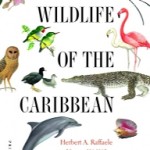
Click to buy Wildlife of the Caribbean
Rich history, boutique wineries and vibrant cultural life made Charlottesville enjoyable destination
Article and photos by Josette King
The rear of Monticello overlooked vast expanses of lawns and flower borders
This was my first visit to Charlottesville, Virginia, a small historic city with a big reputation. I admit I approached it with a degree of skepticism. Everyone I knew who had ever visited had come back smitten and daydreaming about settling there. Surely, no place could be that idyllic? Charlottesville was.
Montpelier offered stunning views of the Blue Ridge Mountains
Although a mere 115 miles (185 kilometers) from Washington, D.C. and 70 miles (110 kilometers) from Richmond, this small Central Virginia city nestled in the picturesque rural foothills of the Blue Ridge Mountains had, in spite of its popularity, retained the charm and tranquil pace of earlier times. Its once Main Street was now the Downtown Mall, an eight block tree shaded pedestrian walkway lined with restored historic buildings. There, antique shops, art galleries and all manner of fashion boutiques mingled with café terraces, restaurants, pubs and several movie and live performance theaters. A favorite spot for tourists as well as local people had a Freedom of Expression Wall where passersby could pen (in chalk) what was on their mind, which I was told included the occasional marriage proposal. The wall was erased each night to give others an opportunity to have their say.
Passersby were welcome to scroll their thoughts on the Freedom of Expression Wall
Charlottesville has conserved to this day the enduring mark imparted upon it two centuries ago by its most illustrious citizen, Thomas Jefferson. In addition to his Monticello home, he founded and designed the University of Virginia. Both of the neoclassical (or Jeffersonian style) masterpieces are now UNESCO World Heritage Sites. Today, Monticello attracts half a million visitors annually and the University of Virginia, with its yearly enrollment of over 23,000 students, contributes significantly to the cultural vitality of the area.
Jefferson also made a significant impact on the landscape of the area, albeit posthumously, when he attempted to establish vineyards on land adjoining Monticello, only to have his efforts thwarted by the start of the Revolutionary War in 1774. In the latter part of the 20 century, a handful of determined growers were inspired to revisit his vision to develop the Central Virginia vineyards.
The tasting room at Jefferson Vineyards Winery
Today, Virginia has over 2,000 acres (810 hectares) of vineyards, half of them around Charlottesville. Almost 30 of the wineries form the Monticello Wine Trail and welcome visitors in their tasting rooms. A well mapped itinerary took me along some of the loveliest back roads of the greater Charlottesville area. One of the oldest, Jefferson Vineyards, was within a stone’s throw of Monticello, on the very land where Jefferson made his own wine growing attempt.
In addition to Thomas Jefferson, the Charlottesville area was also home to two more of America’s Founding Fathers, James Monroe and James Madison. All three became President of the United States and their respective homes Monticello, Ash Lawn Highland and Montpelier were open to tourists. I combined their visit, in an itinerary known as the Presidents Trail, with that of nearby wineries. Along the way, I soon discovered that the bucolic setting had drawn a large number of talented artists and craftspeople, whose studios and galleries made for an enjoyable visit as well.
Glass artist Cara DiMassimo with some of her recent creations
With its charming rural environment, rich history, vibrant artistic life, inviting vintage downtown, wineries and more than a few notable restaurants to boot, I could see how Charlottesville could be an enjoyable place to live. It was an exceptional place to visit.
Gourmet teas a reminder of Paris at home
By Elena del Valle
Photos by Gary Cox
Our selection of Mariage Freres teas
Over the years we have sampled so many teas we’ve lost count. From plantations in India to gourmet tea shops in Paris, France and many places in between, tea has accompanied many special and memorable occasions.
Recently, we decided to sample a variety of teas over a few days. The idea was to dedicate our clean palates to tasting a single tea or two at most per sitting. The time and attention were meant to allow us an opportunity to explore the tea leaves and their color, tea fragrance and taste, and lastly the finish if there was one.
A closeup of the label showing brewing instructions
To compare apples to apples as it were all the teas we sampled were from the same shop, Mariage Freres Marais in Paris, France (Mariage Freres Marais, 30 rue du Bourg-Tibourg,75004 Paris, France, www.mariagefreres.com, info@mariagefreres.com,+33 1 42 72 28 11). Some we brought home with us and others arrived by post. The shipping caused some unpleasantness with the delivery company who tacked our small order with customs processing fees even though there was no evidence that customs officials viewed our package, and without ever obtaining our approval in advance.
The Marco Polo tea came in a tin inside a box
We sampled the following loose teas: Ivory Himalaya The Blanc Grand Cru, Marco Polo Mervelleux the noir gout fruite et fleury (marvelous fruity and flowery black tea), Opium Hill The Bleu du Triangle d’Or (blue tea from the Golden Triangle), and PU-ERH millesime 2000 (vintage 2000) The mur de Chine (ripe tea from China). We also tried Sables au The Marco Polo (Marco Polo flavor sable cookies).
The Marco Polo Mariage Sables
The label on each bag, box or container provided instructions including the quantity of tea leaves per cup, the water temperature and the amount of brewing time. We followed the directions preparing the tea with bottled water and placing the tea leaves in individual cotton tea sleeves. We served the tea in a clear glass cup that allowed us to see the color of each tea.
The Ivory Himalaya tea
The Ivory Himalaya white tea came in a plastic bag within a square carton which was sealed in an airtight wrapper. The tea weighed 20 grams. There was no visible expiration date on the package. The recommended serving was five grams of tea per cup brewed (one quarter of the package) for five minutes at 80 Celsius (below boiling). Sourced at a Himalayan plantation in limited quantities it was the priciest of the teas we sampled in that series.
The Marco Polo tea in the tin
A closeup of the Marco Polo tea
The Marco Polo tea came in a pretty black tin containing 100 grams. The expiration date was January 2017. The recommended serving size was two and one half grams of tea per cup brewed for four minutes at 95 Celsius (below boiling). The tea leaves in the container had a distinctive fruity scent which was more pronounced in the brewed beverage. The tea was an appetizing rich medium brown which tasted of mild black tea with a slightly sweet fruit and flower taste. There was no finish of note. We tasted the Marco Polo cookies, made with wheat flour, sugar, concentrated butter, eggs and Mariage Freres Tea, at the same time as the eponymous tea. The buttery, crunchy and sweet cookies came in four plastic wrapped packets of five cookies each. The expiration date was August 2014.
The Marco Polo cookies
The Opium Hill kernels came in a foil 100 gram bag and had an expiration date of January 2016. The recommended serving size was four and one half grams of tea per cup brewed for two minutes at 90 Celsius. Per the salesman’s instructions we infused it three times. He indicated up to seven infusions were possible from a single serving. The tea was pale green with a subtle green tea flavor. We couldn’t be sure if the color grew paler with each infusion. The scent was mild and made us think of green tea. The first infusion had a well defined taste. The flavor became less noticeable and more nuanced with each infusion while the finish became longer lasting and more pronounced. The idea that the third infusion had no theine held particular appeal for us. The third infusion, especially the finish, was a favorite.
The Opium Hill Blue Tea
The PU-ERH came in a foil 100 gram bag which listed no expiration date. The recommended serving size was two and one half grams of tea per cup brewed for five minutes at 95 Celsius. The color was pale. While the scent of the leaves and the brewed tea were the strongest of the teas we sampled in that series the flavor was unexpectedly light. Words that came to mind were musty, smokey and dark all within a palatable range.
A closeup of the PU-ERH millesime 2000
The blue tea, reminiscent of green tea, was a favorite for regular consumption. Given its delicate flavor the Ivory Himalaya would be appropriate for special occasions or to share with friends. The nuances of the tea taste compared to the high cost were difficult to quantify, especially given the many fine tea choices available. On the other hand, the lingering finish on the palate was unequaled in that series and worth seeking out. To read about our tea and gourmet experience at the Mariage Freres Marais Paris tea shop, see Superb gourmet lunch at Paris tea salon
History meets classic cuisine with Virginia twist in Charlottesville
Article and photos by Josette King
The Old Mill Room restaurant was located in the historic part of the property
The Old Mill Room is a restaurant with a distinguished past and a cuisine grounded in the present. Located in the historical core of the Boar’s Head in Charlottesville, Virginia, it was built from a valued piece of local history, the repurposed timber from an abandoned 1834 gristmill famous for having survived the Civil War and gone on to operate a whole six decades after it. Moved piece by pieced from is original site on the banks of the Hardware River, it was integrated in the construction of an inn’s main building in the early 1960’s.
The shaded central lawn of The Boar’s Head evoked of a town common of old
The décor of the restaurant had been designed to showcase those striking architectural details while creating a refined environment that evoked timeless southern grace. It was an ideal setting for the elegant classic cuisine with a Virginia flair and international contemporary touches dished out by Bill Justus, executive chef, and his team.
At the Old Mill Room the building was not the only custodian of a proud history. When Chef Justus joined the Boar’s Head as executive chef in 2010, he took over a restaurant with the singular distinction of being the longest holder of a AAA Four Diamonds designation in the Commonwealth of Virginia.
The historic Old Mill Room was built from the timber of an abandoned 1834 gristmill
Justus maintained the award winning culinary excellence while bringing to the menu the lighter dishes, farm to table freshness of local ingredients and imaginative flavor and texture pairings I appreciated. At the time of my visit, the Old Mill Room had been awarded once again its Four Diamonds, for the 27 consecutive time.
Executive Chef Bill Justus
From the amuse bouche of chilled watermelon with goat cheese mousse to the perfectly caramelized creme brulee, my meal was a shining example of the creativity that went on in the kitchen. My appetizer skillfully balanced the sweet tenderness of exquisitely seared scallops with a light crust of smoky ancho chili pepper and bitter cocoa. As for the sunburst trout filets of my main course, they were dusted with blue cornmeal and served with a colorful accompaniment of tiny black Peruvian potatoes and Atlantic lobster succotash, and a discrete dash of Pernod in the light lobster sauce. It was interesting and delicious.
Pan seared halibut with steamed clams in a light saffron sauce
It stands to reason that my local friends regard the Old Mill Room as one of the greater Charlottesville area de rigueur places to celebrate special occasions. I will plan to return myself, the next time my travels take me back to Central Virginia.

